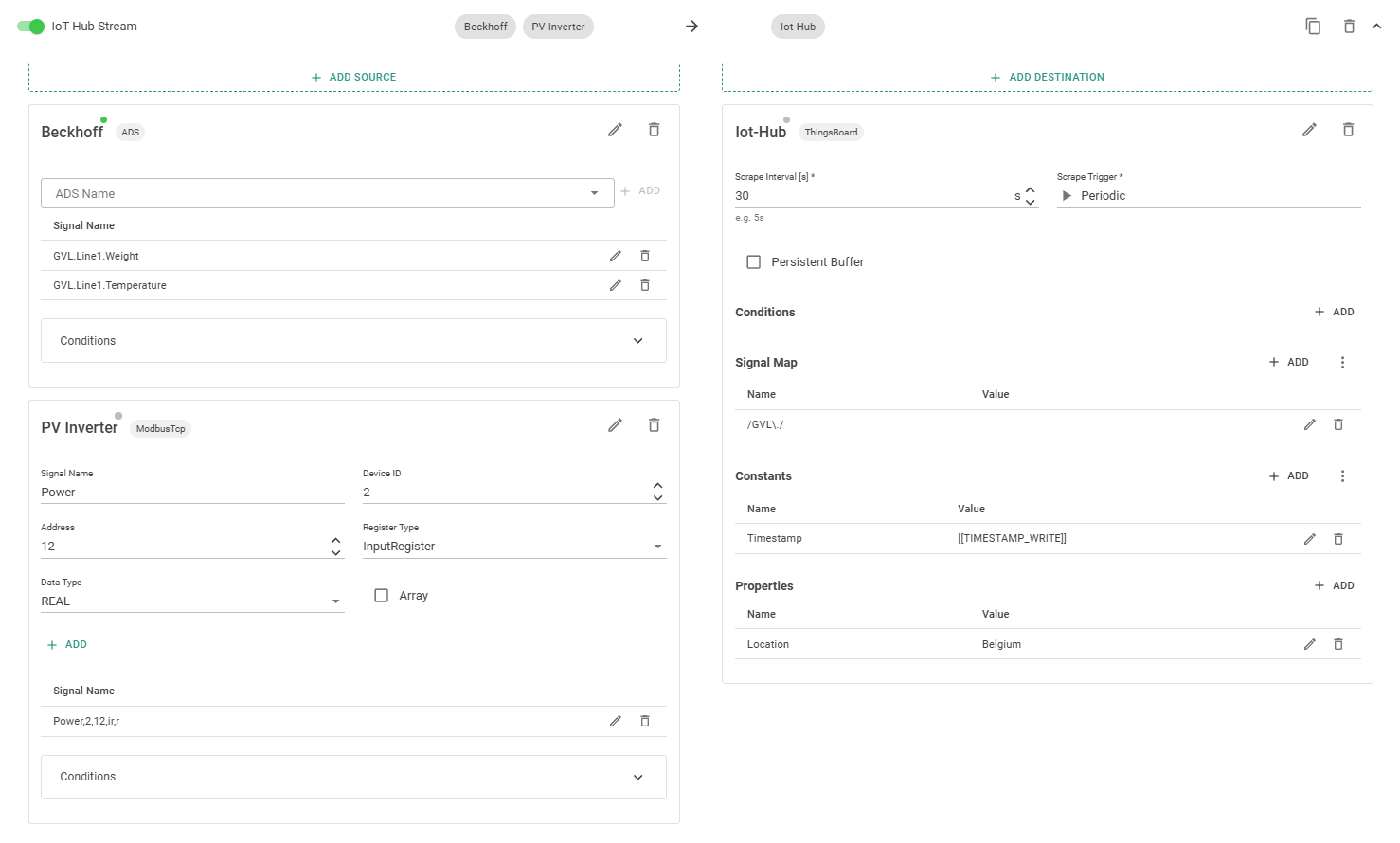Connecting a Beckhoff PLC and a Modbus TCP PV inverter to Azure IoT Hub
To illustrate the functionality of the Router service, the configuration of a simple Signal Route is shown.
It reads the Signals GVL.Line1.Weight and GVL.Line1.Temperature from a Target named Beckhoff and a Signal named Power,2,12,ir,r from the Target PV Inverter every 30s. If a value changes, it sends this value together with a Constant Timestamp and a Property Location = Belgium to the Target IoT Hub. Before sending, it renames the first two signals to Line1.Weight and Line1.Temperature.
Corresponding Edge configuration and Device Twin definition to activate the ADS Target service:
- Edge-UI
- Device Twin

Beckhoff is in this example the Name of the Target. This can be any unique name.
{
"Router": {
"SignalRoutes": {
"IoT Hub Stream": {
"Enabled": true,
"Sources": [
{
"TargetName": "Beckhoff",
"Signals": [
"GVL.Line1.Weight",
"GVL.Line1.Temperature"
],
"Conditions": {}
},
{
"TargetName": "PV Inverter",
"Signals": [
"Power,2,12,ir,r"
],
"Conditions": {}
}
],
"Destinations": [
{
"TargetName": "IoT Hub",
"ScrapeInterval": 30,
"ScrapeTrigger": "OnChange",
"Constants": {
"Timestamp": "[[TIME]]"
},
"Properties": {
"Location": "Belgium"
},
"SignalMap": {
"/GVL\./": null
}
}
]
}
},
"Enabled": true
}
}
To delete a Route via the Device Twin, it have to be set to null.
To delete a Route via the Azure IoT Hub Device Twin, it must be available in the desired section before setting it to null. Otherwise this null property will not be sent to the Edge device. This is the standard behaviour of the Azure IoT Hub.